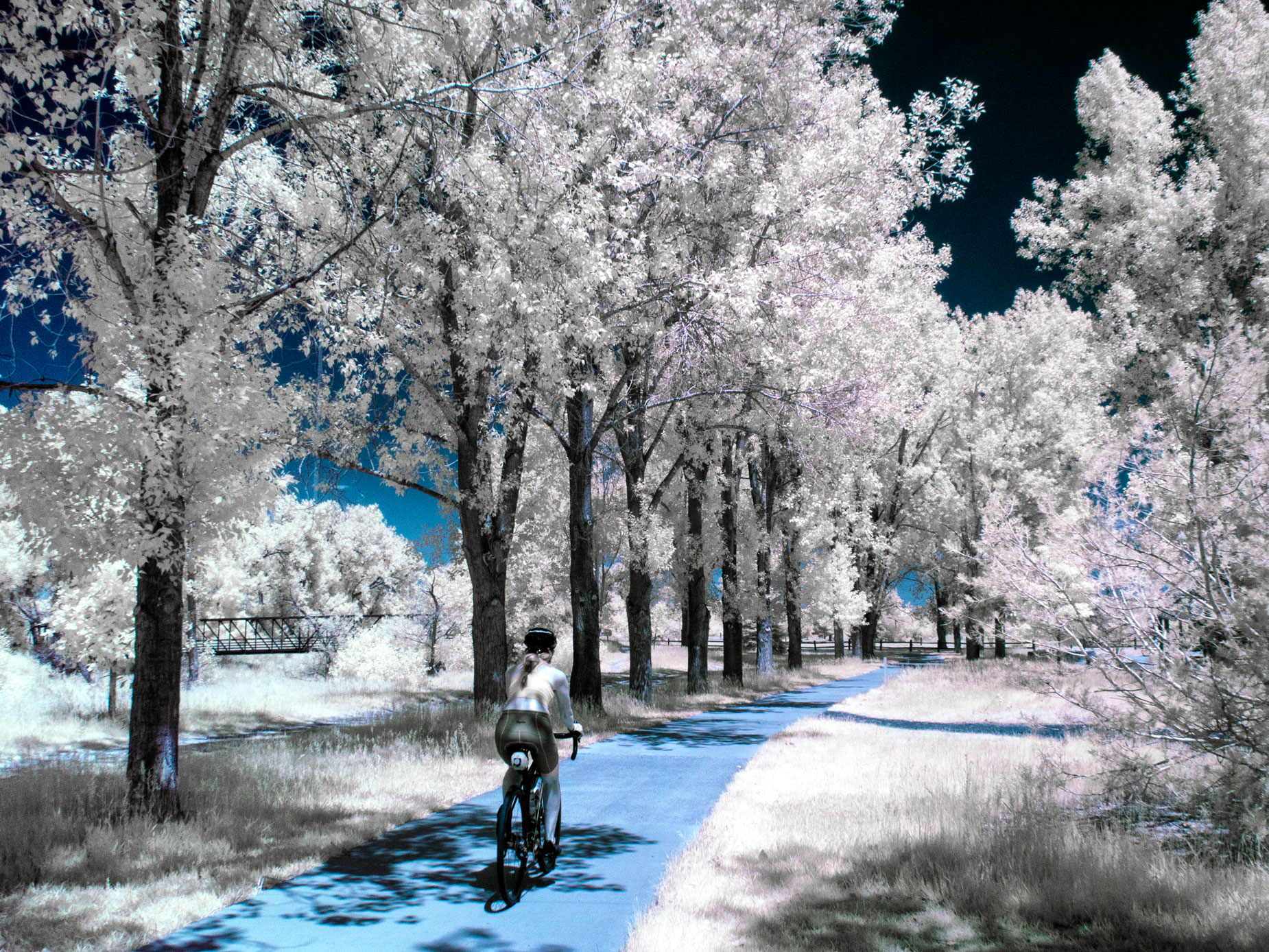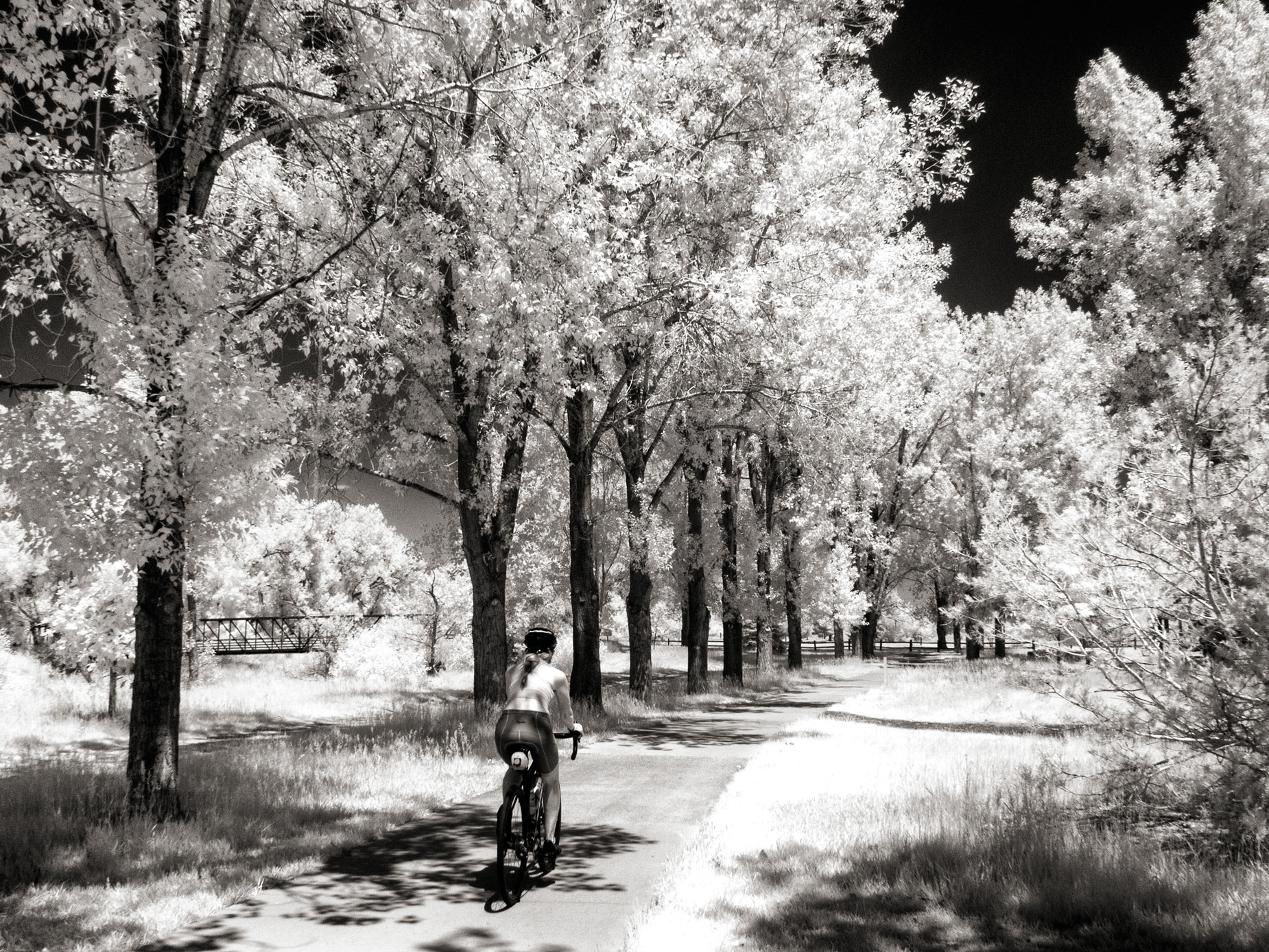On Sunday June 16, I decided to take an infrared PhotoWalk in McCabe Meadows to answer a question I previously asked myself about black and white infrared photography. So, I wanted to shoot a similar image tp what appeared in that post and then process the RAW file into a black and white photograph and, you know, see what happens.
Today’s Post by Joe Farace
“To see in color is a delight for the eye but to see in black and white is a delight for the soul” –Andri Cauldwell
 It looked like a perfect Infrared Day. It was 87 degrees F, sunny and warm but there was a cool breeze blowing across McCabe Meadows when I set out on my PhotoWalk.
It looked like a perfect Infrared Day. It was 87 degrees F, sunny and warm but there was a cool breeze blowing across McCabe Meadows when I set out on my PhotoWalk.
To make these infrared images, I grabbed my Panasonic Lumix G6 that had been converted for infrared capture by Life Pixel using their Enhanced IR (665nm) filter. The lens mounted was an Olympus M. Zuiko 17mm f/2.8 lens. Its compact design makes it, I think, a pancake lens while producing a field-of-view equivalent of a 34mm lens. The Av exposure for the RAW file (shown at right) was 1/320 sec at f/16 and ISO 400.
So what kind of monochrome or color photographs could and did I make from the RAW file? How did it go when I got back to my home office, downloaded the RAW+JPEG files and started processing the image files?
In Living Color
The first approach I tried when processing the RAW file was to create something in color. To do that, the file was processed in Adobe Photoshop CS6 using one of Life Pixel’s proprietary Photoshop actions that were available when I originally had the conversion done. The action I applied was called “IR Channel Swap with White Foliage.” Then I used Vivenza to tweak the contrast and color saturation just a slight amount to produce the image shown below.

In Black and White
But the goal of this post was to try to create a classic black and white infrared look with a camera that has a different IR conversion than from my first post, wasn’t it? Yes…
Making a classic black and white infrared image from a RAW file produced by an IR-converted camera with the Enhanced IR conversion was less of a challenge.than what I was able to accomplish when working with RAW files from the Lumix GX1 that had Life Pixel’s Hyper Color conversion that I showed on the June 14th post. That result was shy of the perfect dramatic black and white image that I consider “classic” monochrome infrared…but it was close. Or was it?
I typically use Silver Efex to process my black and white RAW infrared image files but when I tried it with this RAW file, the images produced were slightly less than the classic look. After using Silver Efex, I applied a Platinum tone from PhotoKit, just to take the edge off. The finished image has a subdued look but, I think, more traditional infrared look than my efforts on June 14th. What do you think? Here, submitted for your approval, was the best I could do with this particular file.

